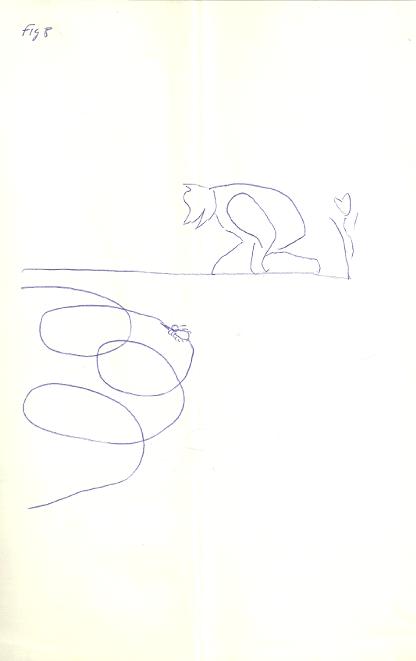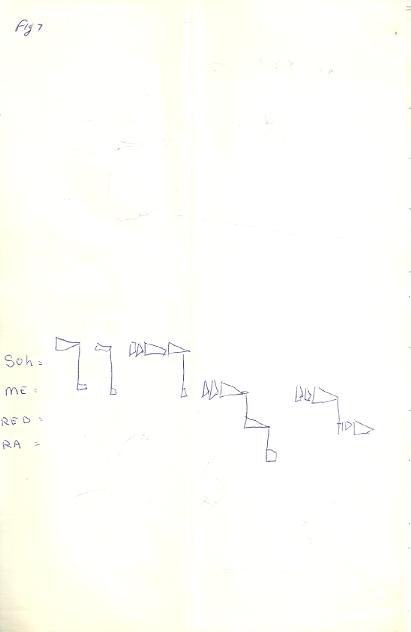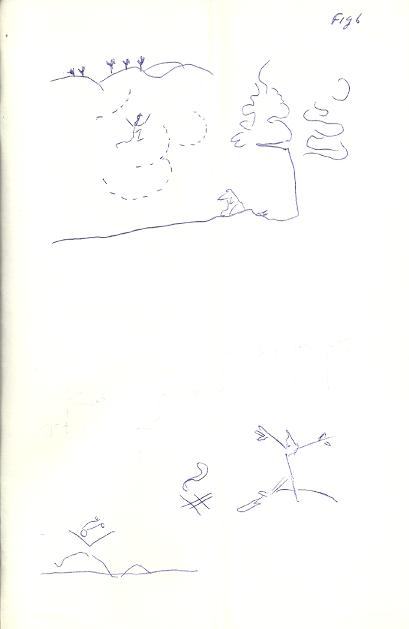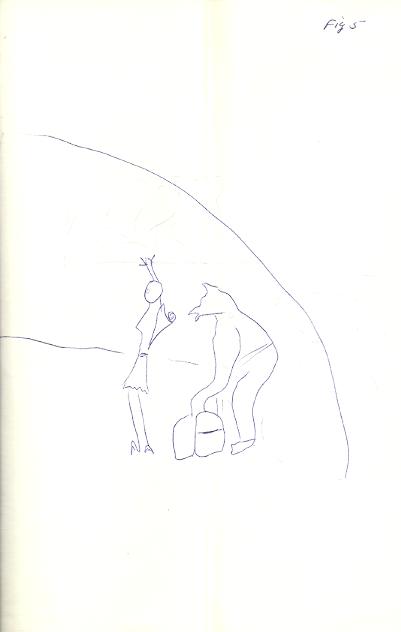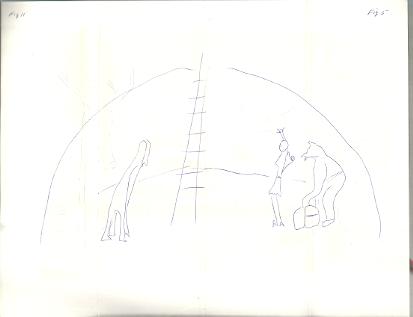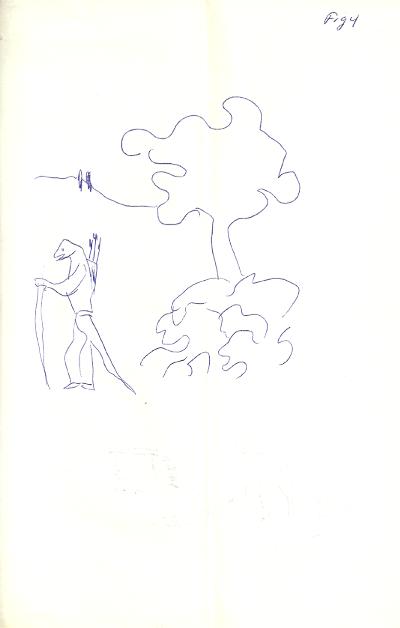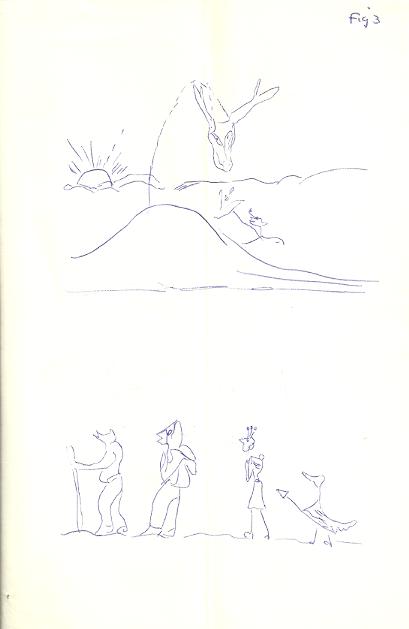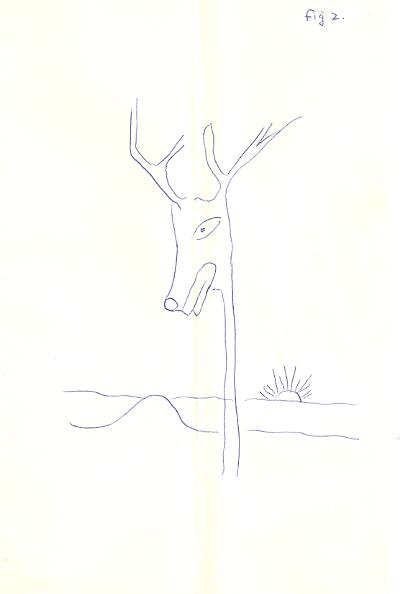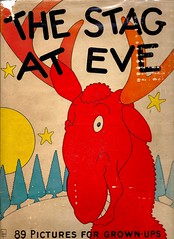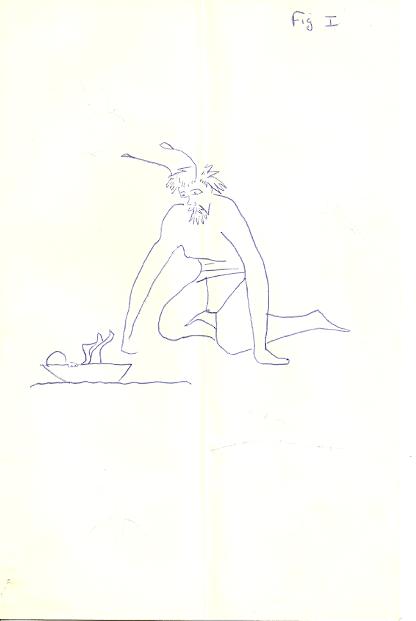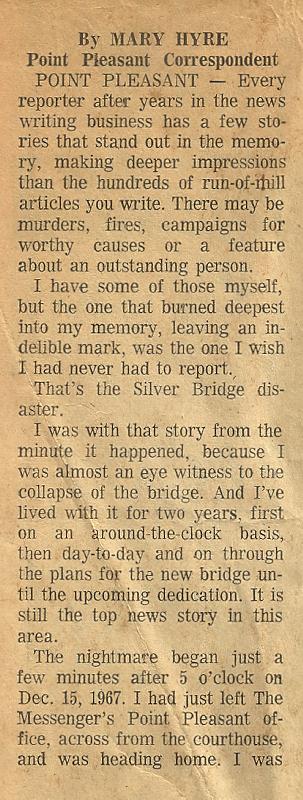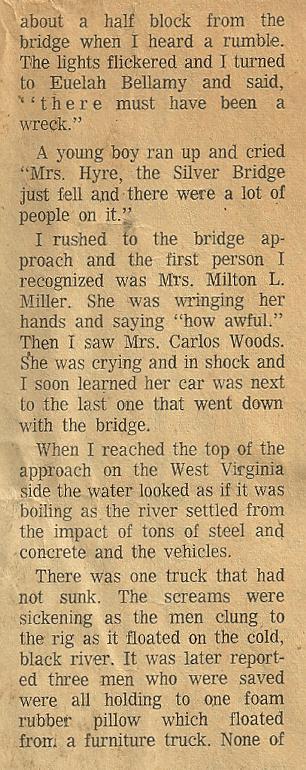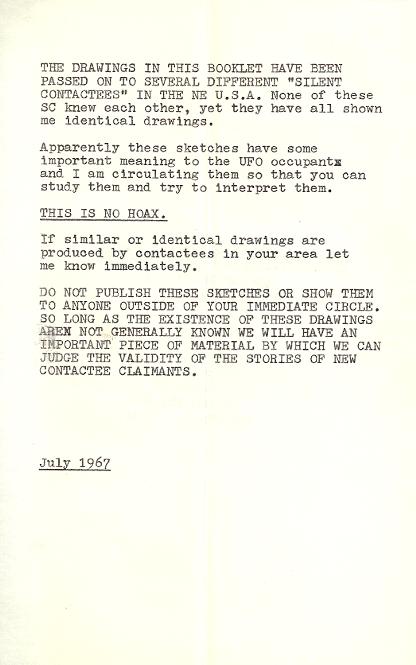
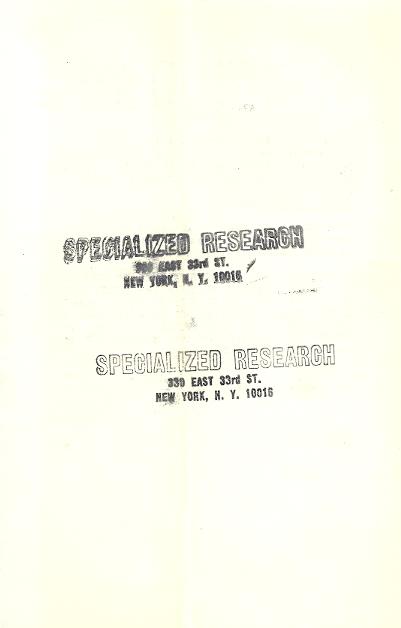
I’d like to post here a booklet of drawings that John Keel circulated in 1967. I’m curious if anyone knows anything about them. Has anyone out there seen them before?
“Specialized Research,” stamped on the back of the booklet, was the name that John gave to his investigations at the time. “Silent contactees” were people who claimed paranormal experiences, but didn’t publicize them; some of them wrote to John because they thought he could explain something that they couldn’t. These experiences weren’t necessarily related to UFOs, but included channeling, phone and electronic interference, and creature sightings.
John collected information from these sources, and then compared it to find patterns. He sometimes concluded that a report was verified if it came from more than one source. This wasn’t an infallible method; it couldn’t always preclude hoaxing or lying. Repetition of details could also simply mean that information came from a collective wellspring of symbolism; which could be significant for reports that shade off into hypnagogic or hypnopompic states, visions, or channeling. And that may be pertinent for these drawings, which seem more like dream images, or illustrations of myths, than the usual sketches done by UFO witnesses.
John didn’t note who drew these. It’s likely, though, that Jaye Paro was one of them. She was one of his most active sources at this time, producing a rich stream of high strangeness almost daily, including drawings and channeled messages; also, the booklet was inside an envelope from her. However, it’s possible that John sent it to her for her reaction; and she then returned it. The drawings are all done on typing paper with a blue ballpoint pen. I also found a photocopy, so I suppose John did send them to fellow researchers.
It’s worth mentioning that there was some ambivalent sexual tension between John and Jaye. He noted that she was single, afraid of childbirth, and would be attractive if she lost weight. She told him (in July 1967) that she was in contact with androids who said that she should marry John and have children. It went no further than that; but I mention it since the pictures sometimes show families and children. If Jaye was indeed producing them, that may be part of the story.
I assume it’s okay now to show these drawings; John wanted to keep them secret at the time to see if other witnesses produced anything similar. But that was long ago…
POSTSCRIPT: Clarence Carlson, who comments on this site, has discovered that the drawings are taken from the 1953 book Indian Tales, written and illustrated by Jaime de Angulo. The book is based on stories from California tribes, about an anthropomorphic animal family traveling through the state. Thanks, Clarence!
